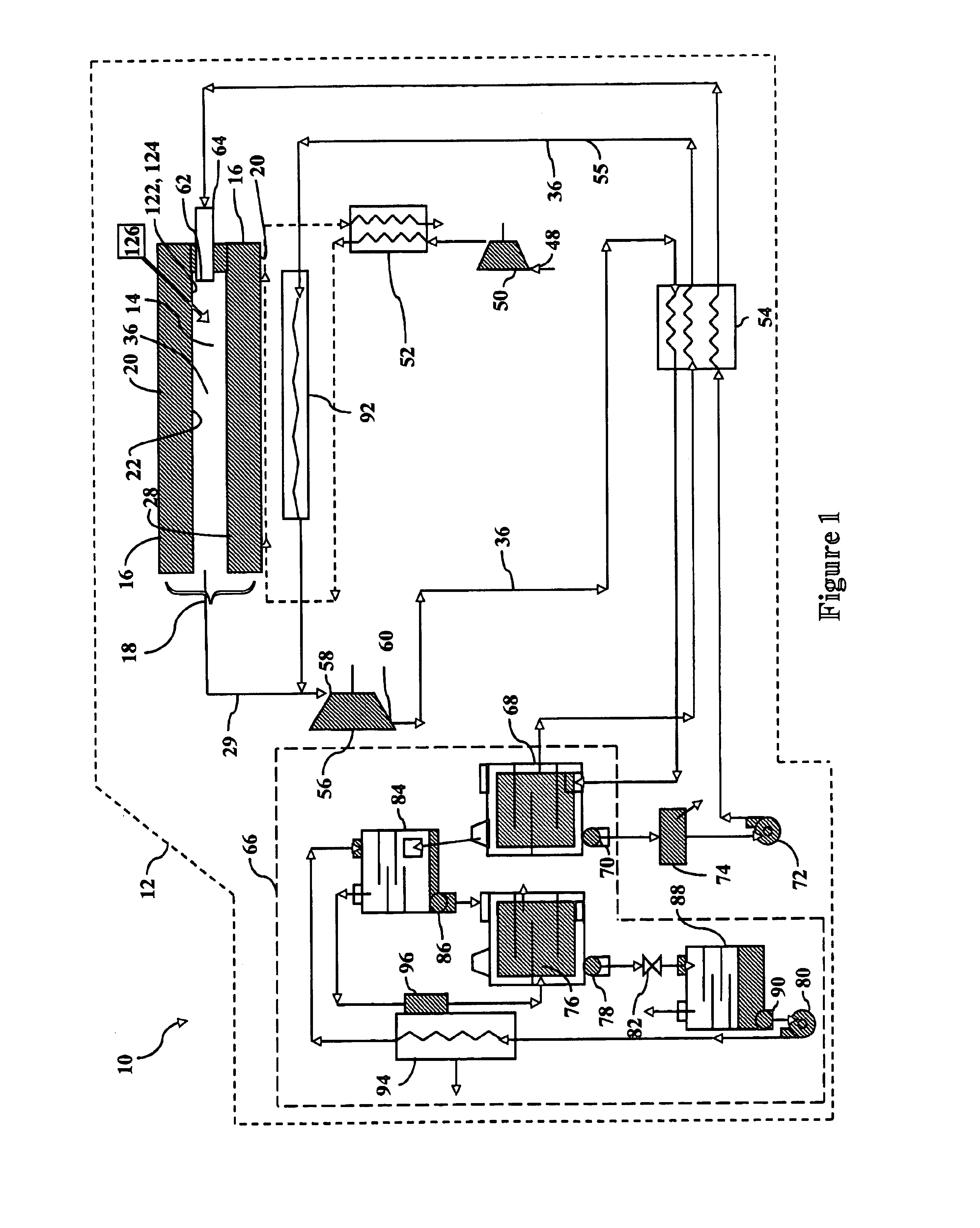Combusting hydrocarbons excluding nitrogen using mixed conductor and metal hydride compressor
a technology of metal hydride compressor and hydrocarbon fuel, which is applied in the ignition of turbine/propulsion engine, separation process, lighting and heating apparatus, etc. it can solve the problems of limiting the efficiency of most rankine system power plants to less than about 35%, large heat exchangers are needed, and limiting the efficiency of the brayton system to only about 40%, so as to improve the operating efficiency of the combustion engine
- Summary
- Abstract
- Description
- Claims
- Application Information
AI Technical Summary
Benefits of technology
Problems solved by technology
Method used
Image
Examples
Embodiment Construction
[0044]Referring now to the drawings wherein the showings are for purposes of illustrating preferred embodiments of the present invention only, and not for purposes of limiting the same, FIG. 1 is a schematic diagram of a combustion engine 10 of the present invention illustrating the interconnectivity of components that make up the combustion engine 10. FIG. 1 shows the combustion engine 10 as being comprised of an engine housing 12, an air intake port 48, a mixed conductor 16, a water intake port 62, an exhaust turbine 56 and a hydrogen compressor assembly 66. The engine housing 12 includes a combustion chamber 14 that utilizes a mixed conductor 16 to provide a substantially oxygen-pure fraction of air to the combustion chamber 14 for combustion with hydrocarbon fuel and water and which results in the production of exhaust fluid.
[0045]The combustion engine 10 of the present invention is configured to operate under a process that combusts the hydrocarbon fuel while excluding the prod...
PUM
 Login to View More
Login to View More Abstract
Description
Claims
Application Information
 Login to View More
Login to View More - R&D
- Intellectual Property
- Life Sciences
- Materials
- Tech Scout
- Unparalleled Data Quality
- Higher Quality Content
- 60% Fewer Hallucinations
Browse by: Latest US Patents, China's latest patents, Technical Efficacy Thesaurus, Application Domain, Technology Topic, Popular Technical Reports.
© 2025 PatSnap. All rights reserved.Legal|Privacy policy|Modern Slavery Act Transparency Statement|Sitemap|About US| Contact US: help@patsnap.com



